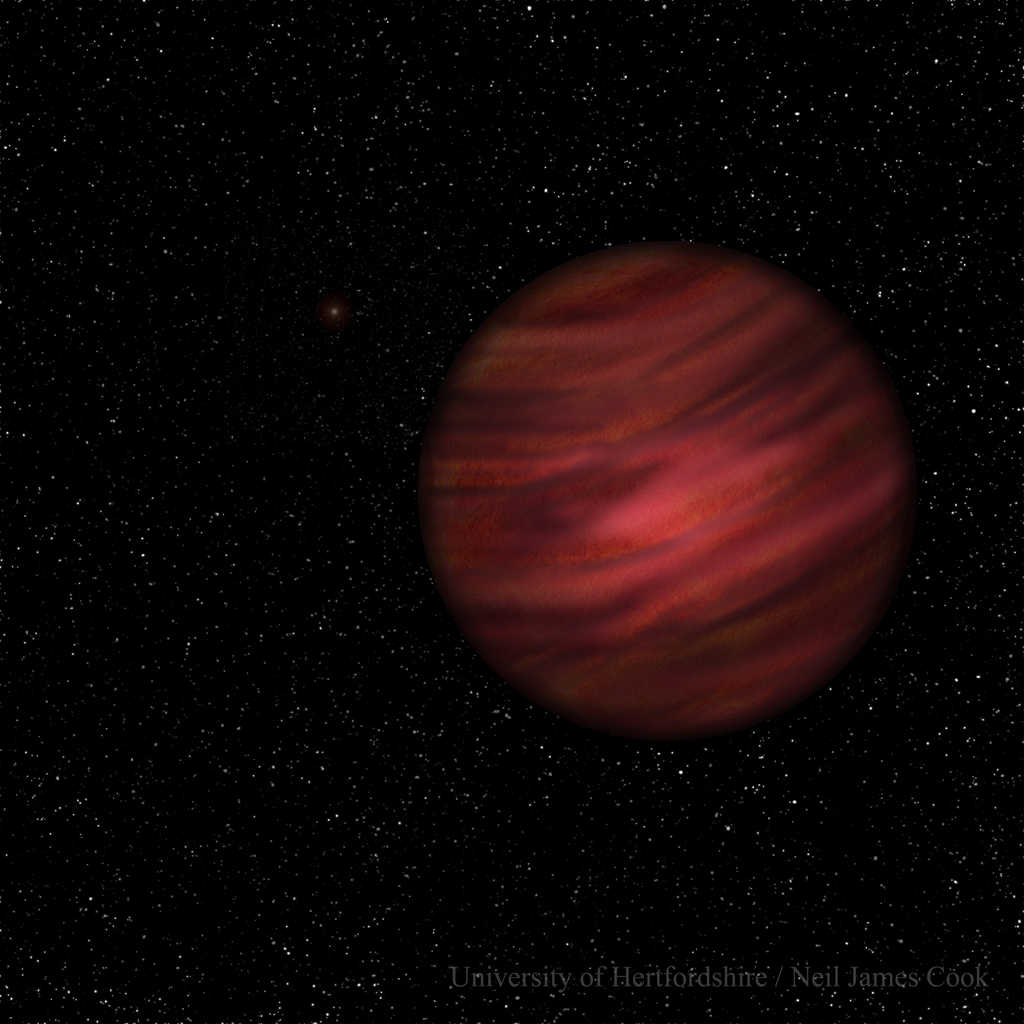
 A team of astronomers in the UK, USA, and Australia have found a planet, until now thought to be a free-floating or lonely planet, in a huge orbit around its star. Incredibly the object, designated as 2MASS J2126, is about 1 trillion kilometers from the star, or about 7,000 times the distance from the Earth to the Sun.
A team of astronomers in the UK, USA, and Australia have found a planet, until now thought to be a free-floating or lonely planet, in a huge orbit around its star. Incredibly the object, designated as 2MASS J2126, is about 1 trillion kilometers from the star, or about 7,000 times the distance from the Earth to the Sun.
In the last five years a number of free-floating planets have been found. These are gas-giant worlds like Jupiter that lack the mass for the nuclear reactions that make stars shine. Measuring the temperatures of these objects is relatively straightforward, but it depends on both mass and age. This means astronomers need to find out how old these objects are, before they can find out if they are lightweight enough to be planets or if they are heavier “failed stars” known as brown dwarfs.
US-based researchers found 2MASS J2126 in an infrared sky survey, flagging it as a possible young and hence low-mass object. In 2014 Canadian researchers identified 2MASS J2126 as a possible member of a 45 million year old group of stars and brown dwarfs known as the Tucana Horologium Association. This made it young and low enough in mass to be classified as a free-floating planet.
In the same region of the sky, TYC 9486-927-1 is a star that had been identified as being young, but not as a member of any known group of young stars. Until now no one had suggested that TYC 9486-927-1 and 2MASS J2126 were in some way linked.
Lead author Dr. Niall Deacon of the University of Hertfordshire has spent the last few years searching for young stars with companions in wide orbits. As part of the work, his team looked through lists of known young stars, brown dwarfs and free-floating planets to see if any of them could be related. They found that TYC 9486-927-1 and 2MASS J2126 are moving through space together and are both about 104 light-years from the Sun, implying that they are associated.
“This is the widest planet system found so far and both the members of it have been known for eight years,” said Dr. Deacon, “but nobody had made the link between the objects before. The planet is not quite as lonely as we first thought, but it’s certainly in a very long-distance relationship.”
Planet 2MASS J2126 is estimated to have between 11.6 and 15 times the mass of Jupiter. This placed it on the boundary between planets and brown dwarfs.
2MASS J2126 is around 7,000 Earth-Sun distances or 1 trillion kilometers away from its parent star, giving it the widest orbit of any planet found around another star. At such an enormous distance it takes roughly 900,000 years to complete one orbit, meaning it has completed less than fifty orbits over its lifetime. There is little prospect of any life on an exotic world like this, but any inhabitants would see their “Sun” as no more than a bright star, and might not even imagine they were connected to it at all.
Graphic credit – An artist’s impression of 2MASS J2126. University of Hertfordshire / Neil Cook


Be the first to comment